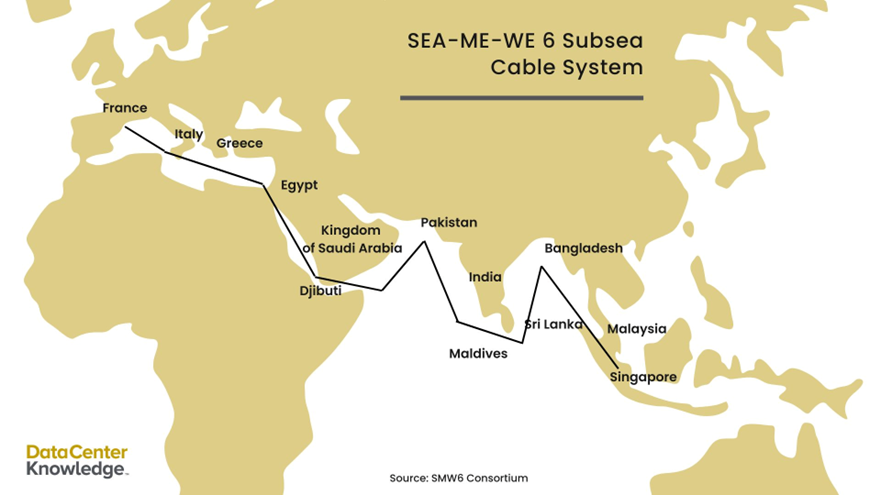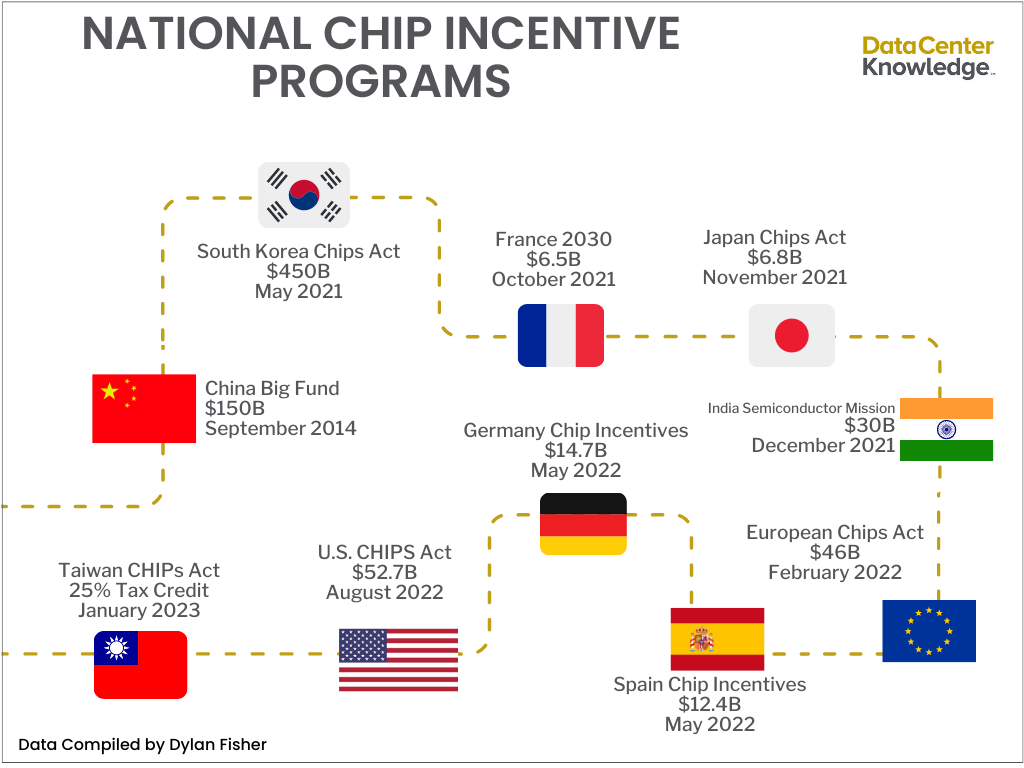China’s two largest telecoms just withdrew their 20% stake in a critical subsea cable project connecting Southeast Asia to Europe, according to the Financial Times (FT).
One of the implications of this move is higher costs for interconnectivity for data center operators doing business in both regions. This withdrawal worsens the already tense relations between the U.S. and China around technology, data sovereignty, and digital infrastructure espionage.
“The fairly recent history of cable landing denials for China telecom companies, coupled with the FCC revoking China Telecom and China Unicom’s authorization to operate in the U.S. and denying China Mobile’s application to operate in the U.S.,” says Omdia analyst Alan Howard, “suggests the U.S. government will impede China-based telecoms’ participation in internet infrastructure wherever they can.”
What’s at stake for data center operators are dependable, low-latency connections between countries, regardless of political turmoil. The pullout of the two telecoms signals digital infrastructure is becoming a tool for leverage in negotiations and power struggles between China, the U.S., and Russia.
“Sadly, the geopolitical environment continues to deteriorate, exacerbated by the Russia war in Ukraine, which is highlighting the China and Russia allyship. That’s not a good look and will not help stabilize or repair U.S. and China relations,” Howard told Data Center Knowledge.

FT says China’s top telecoms China Telecom and China Mobile canceled funding of the $500 million project because U.S. company SubCom won the contract to build the subsea cable, beating out Hengtong Marine China’s largest subsea cable provider.
Subsea cabling, while important, sometimes goes overlooked in the data center industry. This move by Chinese companies puts critical digital infrastructure at risk due to the vast connections the proposed cable, called SEA-ME-WE 6, would provide. (Note: SEA-ME-WE stands for Southeast Asia, Middle East, and Western Europe.)
A Brief History of Digital Infrastructure Tensions Between U.S. and China
Last October, Taiwan increased defense of its subsea cables from potential attacks from China. The country looked to firm up protections after taking note of Russia’s strategic assault on Ukraine’s digital infrastructure.
Also in that month, the U.S. restricted China’s access to buy semiconductors and the equipment needed to create them, nearly crushing the country’s burgeoning AI efforts.
December saw China issue a formal complaint with the World Trade Organization (WTO) in response to the U.S. sanctions.
In January of this year, China announced plans to create its own semiconductor chip technology, without the help of the world’s leading semiconductor equipment manufacturer, ASML Holding NV.
Since 2021 nations around the globe have announced spending plans to boost home-grown semiconductor manufacturing industries. This was spurred by the supply chain crunch the world experienced during the Covid pandemic.

World leaders stated the reasoning for the increased investment is to reduce costs and create jobs. It’s also insulation against supply chain issues caused by geopolitical conflicts.
“We need to make these chips here in America to bring down everyday costs and create jobs,” said U.S. President Joe Biden during a signing ceremony for the CHIPS and Science Act in August 2022.
“Unfortunately, we produce zero percent of these advanced chips, and China is trying to move way ahead of us to manufacture these sophisticated chips as well,” said Biden.





